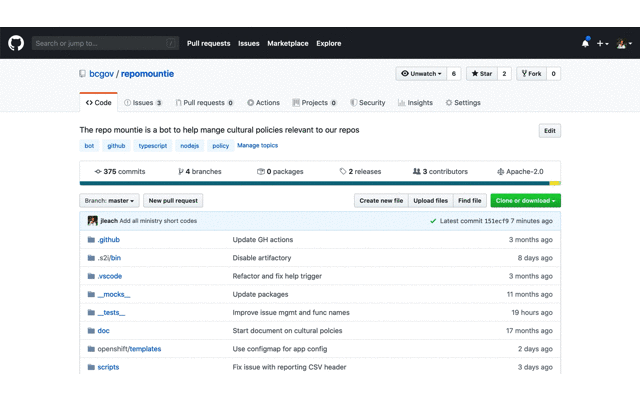Node 10.19 must be installed.
Note, use angular/cli, do not use angular/angular-cli
npm i -g @angular/cli
ng is the CLI itself
Verify the installation
npm list -g @angular/cli --depth=0
ng -v
-
After installing Node and Angular CLI, you can fork or straight download a copy of this application to start your own app.
-
First download all the dependencies with
npm install -
Run
npm startto start the webpack server to run the application on port 4300Go to http://localhost:4300 to verify that the application is running
💡 To change the default port, open
.angular-cli.json, change the value ondefaults.serve.port -
Run
npm run buildto build the project. The build artifacts will be stored in thedist/directory. Use the-prodflag for a production build, like so:ng serve --prodto run in production mode. -
Run
npm run lintto lint your app code usingTSLint -
Run
npm run testto run the unit tests
Run ng generate component component-name to generate a new component. You can also use ng generate directive|pipe|service|class|module.
ng g c customer
ng g d search-box
ng g s general-data
Angular will give out a warning line after this command,
WARNING Service is generated but not provided, it must be provided to be used
After generating a service, we must go to its owning module and add the service to the providers array.
ng g s general-data2 -m app.module
# class
ng g cl models/customer
# interface
ng g i models/person
# enum
ng g enum models/gender
ng g pipe shared/init-caps
Create a login directory and generate a login module in that directory
ng g module login/login.module
Generate a module called admin and add routing feature to it.
ng g module admin --routing
- Run
ng testto execute the unit tests.
Set up with BDDStack and BrowserStack. Modify GebConfig.groovy to customise your preferred browser. Configured remotes, confirmed to work with current tests include Chrome, Firefox, and Edge. Internet explorer and Safari are available as well, but tests fail due to driver compatiblity with current tests.
Open Source projects have free access to Browserstack Live and Automate, for up to 5 team members. To run tests with Browserstack you need to set the following environemnt variables:
- BROWSERSTACK_USERNAME
- BROWSERSTACK_TOKEN
- DEBUG_MODE (true or false)
-
Run
ng run e2eto automatically start the application locally and execute the end-to-end tests against a headless Chrome.OR
-
Download BrowserStack binary set
BASEURLto your local application address, and run./gradlew remoteChrome
Note, e2e functional testing requires Java 10+.
- Determine the URL at which the application is running.
- Update the baseurl to the URL from step 1:
- Either modify the GebConfig.groovy baseUrl directly.
- Or set a
BASEURLenvironment variable
- See
functional-tests/readme.mdfor how to execute the tests.
See the BDDStack Wiki for more information.
ng set default.styleExt css
ng new my-app --routing --style scss
- To get more help on the Angular CLI use
ng helpor go check out the Angular CLI README ng doc componentto look up documentation for featuresng serve --helpto look up doc forng servecommand
For dev, test, and production builds on OpenShift/Jenkins see openshift/README.md for detailed instructions on how to setup in an OpenShift environment using nginx.
To use our Visual Studio Code extensions copy the contents of vscodeextensions.txt in the scripts directory and paste it into bash. If it doesnt work, make sure you have the Code CLI installed code --version and if it's not installed open the command palette (shift + command + p) and run Shell Command: install 'code' command in PATH.
Feel free to create pull requests from the default "master" branch, click here to create one automatically: https://github.com/bcgov/mem-mmti-public/pull/new/master
Thanks to BrowserStack for Testing Tool support via OpenSource Licensing 

